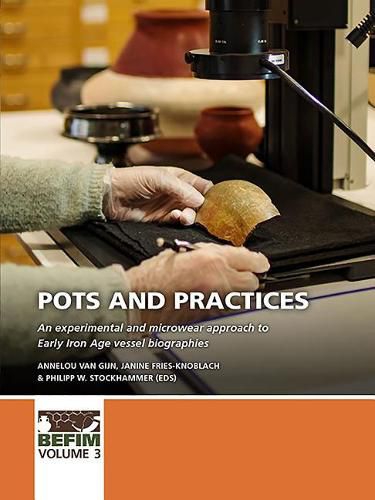Readings Newsletter
Become a Readings Member to make your shopping experience even easier.
Sign in or sign up for free!
You’re not far away from qualifying for FREE standard shipping within Australia
You’ve qualified for FREE standard shipping within Australia
The cart is loading…






This third volume of the BEFIM series addresses the life history of vessels from the Early Celtic hillfort settlements of Heuneburg and Vix-Mont Lassois, from a detailed examination of the manufacturing process to the use and modifications of the final products. An extensive experimental program of dozens of experiments has allowed a better understanding of the way this pottery was made and used.
The participation of an experienced potter allowed the reprodiction of exact replicas of the different wares, and the exploration of the impact of the creation process in wear patterns and traces.
The effect of alcohol production, including fermentation, on the pottery was also explored, as well as the effect of different gestures of preparing food and drink (mixing, stirring, pounding), different ways of storage and handling, and the manner of consumption like decanting using various kinds of utensils.
These experimental results form the basis of the book’s exploration, which adds to a more detailed insight into foodways, including drinking habits, of the Early Celtic communities of Central Europe.
$9.00 standard shipping within Australia
FREE standard shipping within Australia for orders over $100.00
Express & International shipping calculated at checkout
This third volume of the BEFIM series addresses the life history of vessels from the Early Celtic hillfort settlements of Heuneburg and Vix-Mont Lassois, from a detailed examination of the manufacturing process to the use and modifications of the final products. An extensive experimental program of dozens of experiments has allowed a better understanding of the way this pottery was made and used.
The participation of an experienced potter allowed the reprodiction of exact replicas of the different wares, and the exploration of the impact of the creation process in wear patterns and traces.
The effect of alcohol production, including fermentation, on the pottery was also explored, as well as the effect of different gestures of preparing food and drink (mixing, stirring, pounding), different ways of storage and handling, and the manner of consumption like decanting using various kinds of utensils.
These experimental results form the basis of the book’s exploration, which adds to a more detailed insight into foodways, including drinking habits, of the Early Celtic communities of Central Europe.